Abstract
We tested CI-919 (AT-2266), a nalidixic acid analog, against 555 gram-positive and gram-negative bacteria, using microbroth or agar dilution methods. The activity of CI-919 was compared with those of cephalosporins, tobramycin, ticarcillin, dicloxacillin, rifampin, chloramphenicol, ampicillin, and trimethoprimsulfamethoxazole. The minimal inhibitory concentrations of CI-919 for 90% of isolates were (in micrograms per milliliter): Pseudomonas spp. (including Pseudomonas aeruginosa), 4.0; Enterobacteriaceae, 0.5; Staphylococcus spp., 2.0; Haemophilus influenzae, 0.12; Campylobacter jejuni, 0.12; and enterococci, 16. The minimal inhibitory concentrations of CI-919 for 90% of 82 tobramycin-resistant, gram-negative strains was 4.0 micrograms/ml. CI-919 was bactericidal for most isolates, showing no cross-resistance with unrelated antimicrobial agents, and was stable for 11 weeks at temperatures ranging from 22 to -70 degrees C. Inoculum size and media pH had little effect on the antibacterial activity of CI-919 for nine strains tested. CI-919 may be useful as an oral antibiotic for the treatment of infections due to diverse bacteria, including P. aeruginosa.
Full text
PDF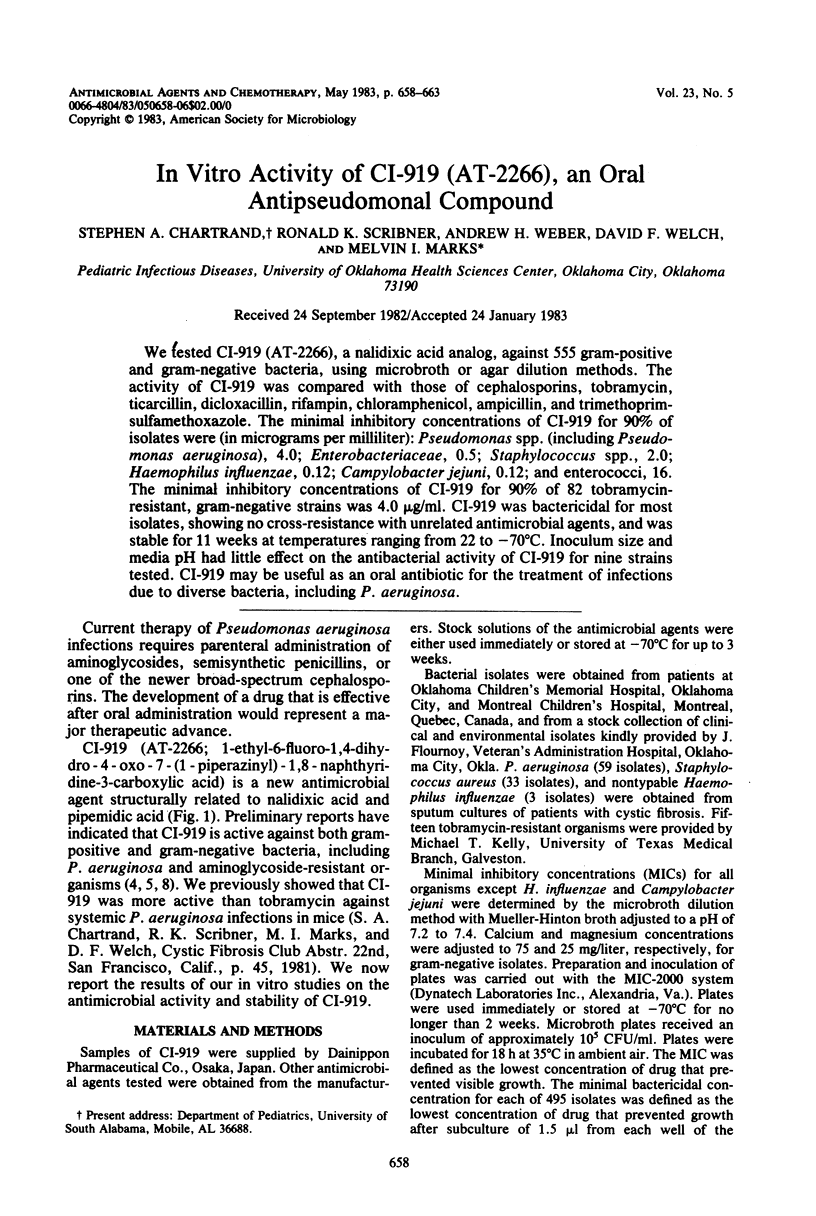
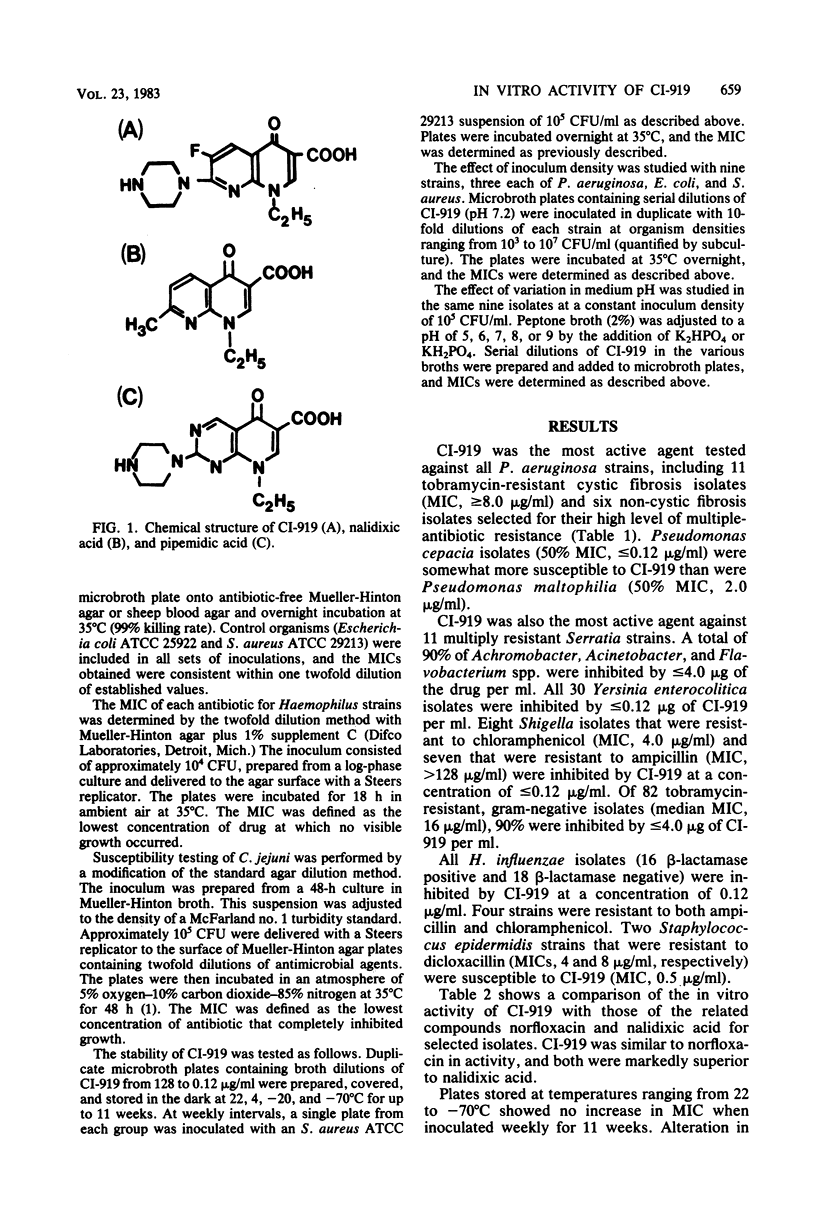
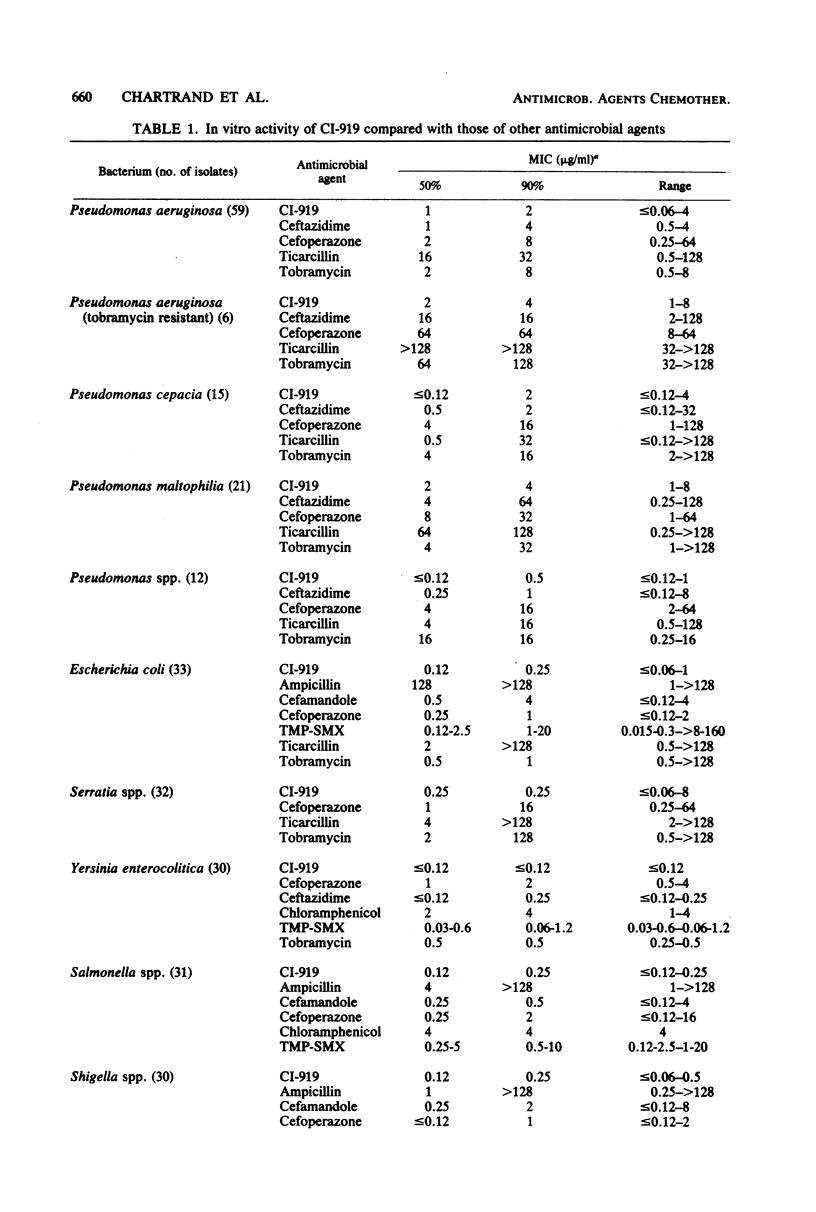
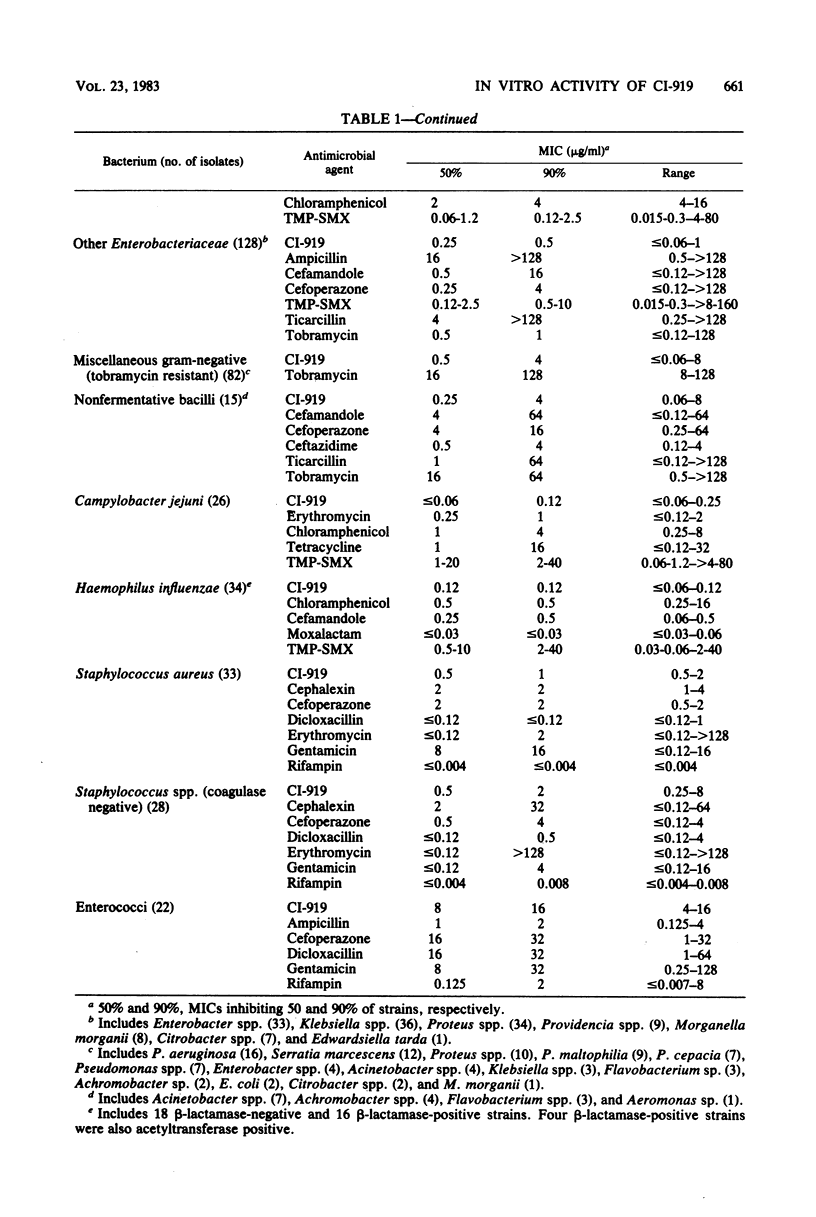
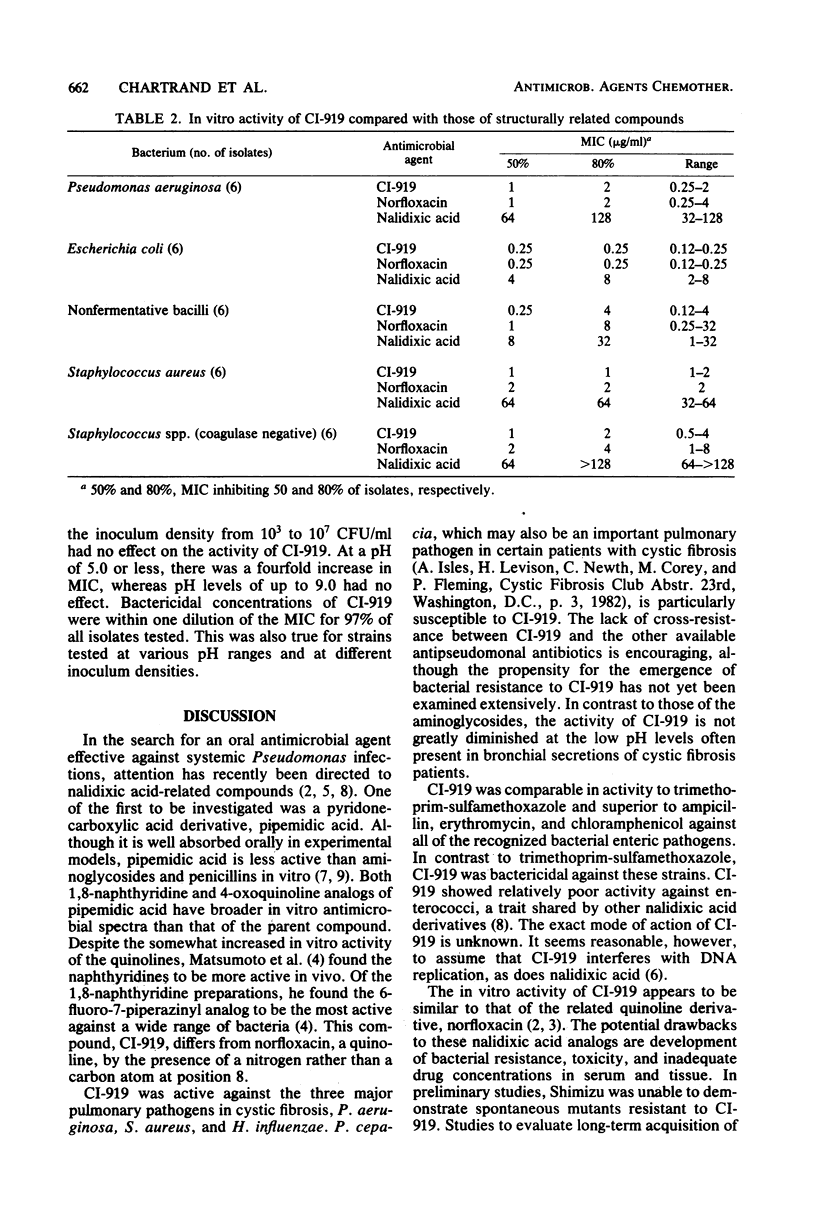
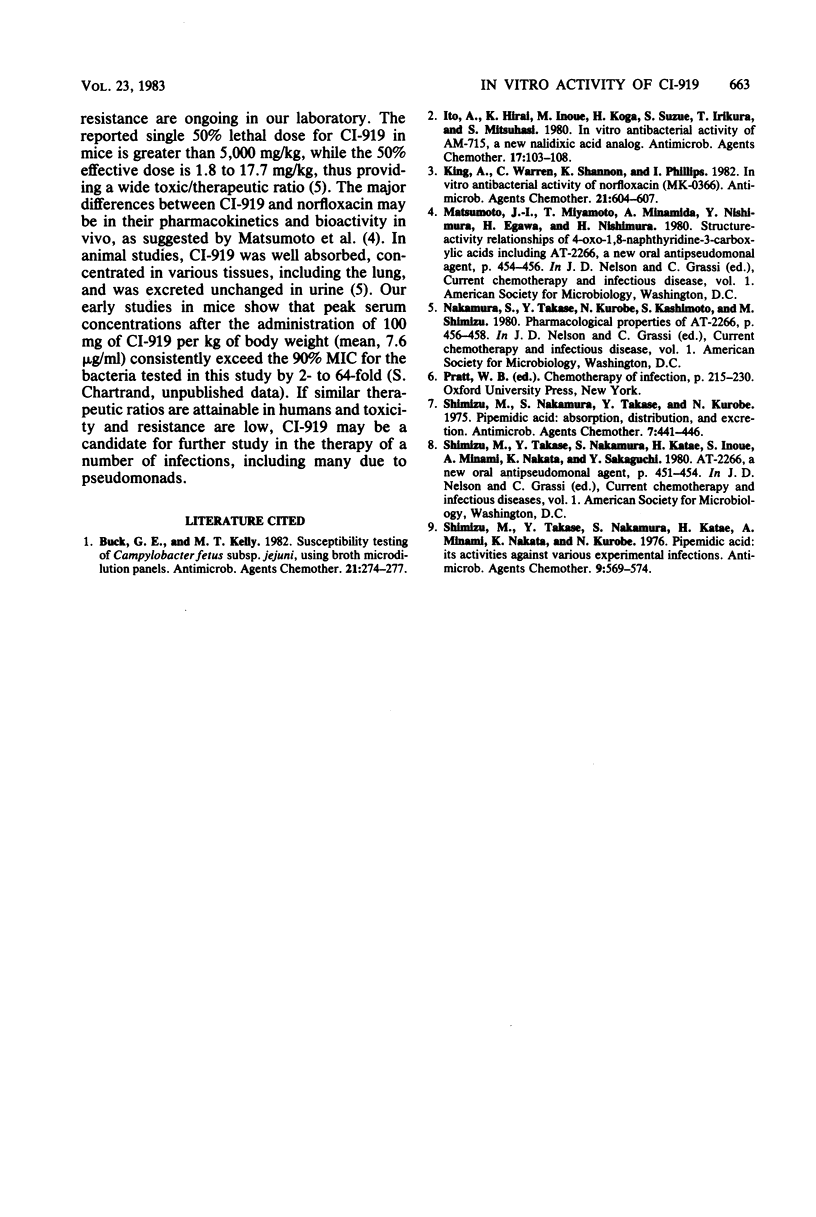
Selected References
These references are in PubMed. This may not be the complete list of references from this article.
- Buck G. E., Kelly M. T. Susceptibility testing of Campylobacter fetus subsp. jejuni, using broth microdilution panels. Antimicrob Agents Chemother. 1982 Feb;21(2):274–277. doi: 10.1128/aac.21.2.274. [DOI] [PMC free article] [PubMed] [Google Scholar]
- Ito A., Hirai K., Inoue M., Koga H., Suzue S., Irikura T., Mitsuhashi S. In vitro antibacterial activity of AM-715, a new nalidixic acid analog. Antimicrob Agents Chemother. 1980 Feb;17(2):103–108. doi: 10.1128/aac.17.2.103. [DOI] [PMC free article] [PubMed] [Google Scholar]
- King A., Warren C., Shannon K., Phillips I. In vitro antibacterial activity of norfloxacin (MK-0366). Antimicrob Agents Chemother. 1982 Apr;21(4):604–607. doi: 10.1128/aac.21.4.604. [DOI] [PMC free article] [PubMed] [Google Scholar]
- Shimizu M., Nakamura S., Takase Y., Kurobe N. Pipemidic acid: absorption, distribution, and excretion. Antimicrob Agents Chemother. 1975 Apr;7(4):441–446. doi: 10.1128/aac.7.4.441. [DOI] [PMC free article] [PubMed] [Google Scholar]
- Shimizu M., Takdase Y., Nakamura S., Katae H., Minami A. Pipemidic acid: its activities against various experimental infections. Antimicrob Agents Chemother. 1976 Apr;9(4):569–574. doi: 10.1128/aac.9.4.569. [DOI] [PMC free article] [PubMed] [Google Scholar]


